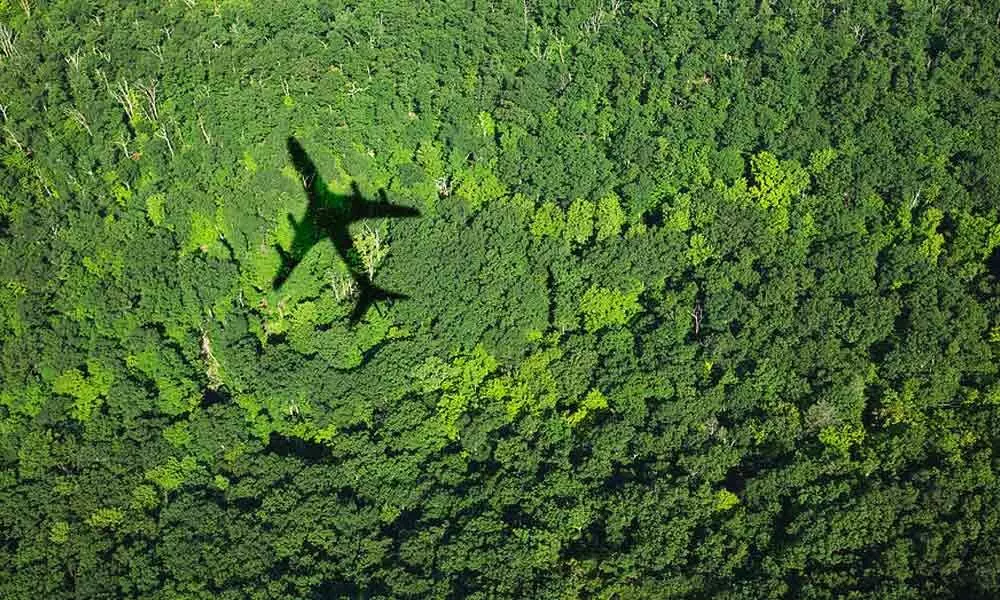Live
- Rajasthan bypolls: A tough contest between BJP and Congress
- Albania joins SEPA, paving way for EU integration
- Japanese government approves 250-billion USD economic package to ease price pain
- Six pharma companies to set up their units in Telangana
- The Unstable Events of a 17-Wicket Day in Perth: India vs Australia
- Dutch FM's Israel trip cancelled after Netanyahu's arrest warrant
- UK to increase energy price cap by 1.2 per cent
- Ethiopia launches national coffee platform to maximise earnings
- Centre completes auction of 3 coal blocks, to yield annual revenue of Rs 2,710 crore
- Ullal Woman Files Complaint Against Husband Over Instant Talaq and Abuse
Just In
Jet Fuel Made From The Crop Could Reduce Emissions By Up To 68 Percent

Hans News Service | 16 Oct 2021 6:55 PM IST

x
Jet Fuel Made From The Crop Could Reduce Emissions By Up To 68 Percent
Highlights
- The aviation industry is vital for the world they live in today, but its emissions from petroleum-based fossil fuels put a pressure on the environment.
- Switching to a sustainable aviation fuel (SAF) generated from plants might lower emissions by up to 68 percent.
The aviation industry is vital for the world they live in today, but its emissions from petroleum-based fossil fuels put a pressure on the environment.
According to a new study, switching to a sustainable aviation fuel (SAF) generated from plants might lower emissions by up to 68 percent. Brassica carinata, a mustard plant type, is an example of a non-edible oilseed crop. It may also be less expensive than petroleum gasoline.
They may theoretically develop carinata-based SAF in the southern United States if they can secure feedstock availability and give appropriate economic incentives along the supply chain, says University of Georgia sustainability scientist Puneet Dwivedi.
Carinata-based SAF has the potential to lower the aviation sector's carbon footprint while also offering economic opportunities and increasing the flow of ecosystem services throughout the southern area. As per the survey by the Environmental and Energy Study Institute, the aviation industry accounted for roughly 2.4 percent of total worldwide carbon dioxide emissions in 2018.
According to a research published earlier this year, these emissions contribute 3.5 percent to anthropogenic climate change. That may not appear to be much, but it's expanding at an alarming rate. However, SAF based on carinata is becoming increasingly practical.
Transitioning to biofuels poses a number of challenges, including the potential for them to supplant vital food crops and the question of whether enough fuel crops can be grown at all. Where, how, and what kind of crop is grown all have a big impact on whether or not it actually reduces emissions.
However, carinata-derived fuel is not a novel concept. It had been researched and tested for several years, with the first jet flight on 100% carinata-derived biofuel taking place in 2012, but the cost was significantly more than traditional jet fuel. The goal of Dwivedi and his team's latest research was to figure out exactly how cost-effective and emissions-reducing the fuel could be.
Governments, on the other hand, are providing incentives for decreasing emissions that did not exist in 2012, such as the Biden Administration's Sustainable Aviation Grand Fuel Challenge, which provides tax credits for a minimum emission reduction of 50% compared to conventional jet fuel. The current policy frameworks for supporting SAF manufacturing and distribution should be maintained.
According to Dwivedi, President Biden's Grand Challenge might be a game-changer in encouraging carinata-based SAF production in the southern region.
Carinata can be produced in the winter months, which is the off-season for food production, in the southeastern states, where temperatures are warmer. This means it doesn't compete with other crops directly. Furthermore, animal food can be made from the by-products of fuel generation.
It appears to be a no-brainer, except for one issue: the United States now lacks the infrastructure to convert the crop into fuel. The team's current study is focused on the practicality of creating these facilities, with the goal of informing decisions made by farmers, investors, and policymakers.
More On

Next Story
More Stories
ADVERTISEMENT
© 2024 Hyderabad Media House Limited/The Hans India. All rights reserved. Powered by hocalwire.com






